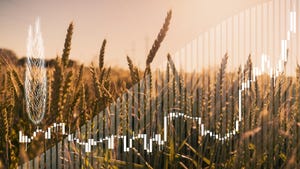January 3, 2020

Seed companies continue to strive for year-over-year yield improvement in new corn and soybean varieties. In research and development, companies continue to invest time, money and other resources to bring forth the best varieties for farmers to plant.
The process has come a long way since Henry A. Wallace began crossing inbred lines, pollinating by hand, and developing the first corn hybrids in the 1920s in a field north of Des Moines, Iowa.
With that simple start, he founded the Hi-Bred Corn Co. in 1926, which he renamed Pioneer Hi-Bred a few years later. For the 2020 planting season, Pioneer is introducing 89 new corn and soybean products for the North American market.
“Those 89 new products — 45 corn hybrids and 44 soybean varieties — represent less than 1 in 10,000 of the actual potential products we test every year to determine which ones are worthy of moving forward to be grown on our customers’ farms,” says Brent Wilson, Pioneer product line and agronomy lead for Corteva Agriscience. “It’s a very extensive process.”
Using 'Moneyball' genetic tools
In other words, just one out of 10,000 tested hybrids or varieties makes it to market. “While 99.99% of the genetics we tested and researched didn’t make it to market, we know that the products that are commercialized represent the strongest genetics,” says Judd O’Connor, president of U.S. commercial business for Corteva Agriscience. “Thanks to improved technology, the sophisticated selection process we use today is getting faster.”
One of those techniques is using computer simulation to sort through all the data being generated on the many experimental corn and soybean seed products.
“If you think of the movie ‘Moneyball,’ you’ll understand how this works,” Wilson says. “In the movie, baseball teams were analyzing the stats of all the players, trying to figure out what would make the best team. We use a similar process in corn and soybean genetic evaluation. We are taking 45 billion data points in soybeans and about 80 billion data points in corn and running these through a computer simulation model. It helps us sort out which products are most likely to succeed in the field, year in and year out.”
Data is driving faster process
Another technique Pioneer is using along with the computer simulation system is called doubled haploids, a system to develop “instant inbreds.” The cells of a corn plant are run through a double-haploid process in a lab and end up with a pure inbred for breeding. It used to take four or five years to create that path.
“Now, we can do it in one year,” Wilson says. “It’s a huge time savings, for sifting through all those genetic combinations and finding the ones that are most superior and have the best chance to make it to the marketplace and be a success for the farmer.”
Using genetic markers also is more common in crop breeding to evaluate traits. And some seed companies are using artificial intelligence robots to help gather data and determine which hybrids and varieties are performing well in field testing.
“Quickly and accurately analyzing the increasing amount of data being harvested will drive the future of crop variety development and improvement,” Wilson says.
Reaching higher yield potential
David Hula, a past national champion corn grower farming in Virginia, won the National Corn Growers Association 2019 national corn yield contest with a record 616.1953 bushels per acre, using Pioneer hybrid P1197YHR.
This world record was produced on a contest plot and is significantly higher than the 167-bushels-per-acre national corn yield average USDA is estimating for the 2019 U.S. corn crop.
Considering this world record, what do Pioneer corn breeders and researchers think the top yield potential of the new corn hybrids now being developed is going to be?
“Looking at the long-term average yield trend, we are adding about 1.5% to 2% yield potential each year across all corn-growing environments,” Wilson says. “Obviously, Mother Nature is driving the bus — weather each year is a big factor. So, you don’t always see the 1.5% to 2% yield improvement on an individual field each year.
"But farmers like David Hula are showing us what is possible. He has a corn production system so well-tuned he can squeeze out every bit of genetic potential from the corn plants. It’s truly amazing what he has achieved, especially if you look at average yields across the Corn Belt, which are less than a third of the high yield he is producing.”
For information on new corn hybrids and soybean varieties Pioneer is introducing for planting by farmers in 2020, visit pioneer.com.
About the Author(s)
You May Also Like






